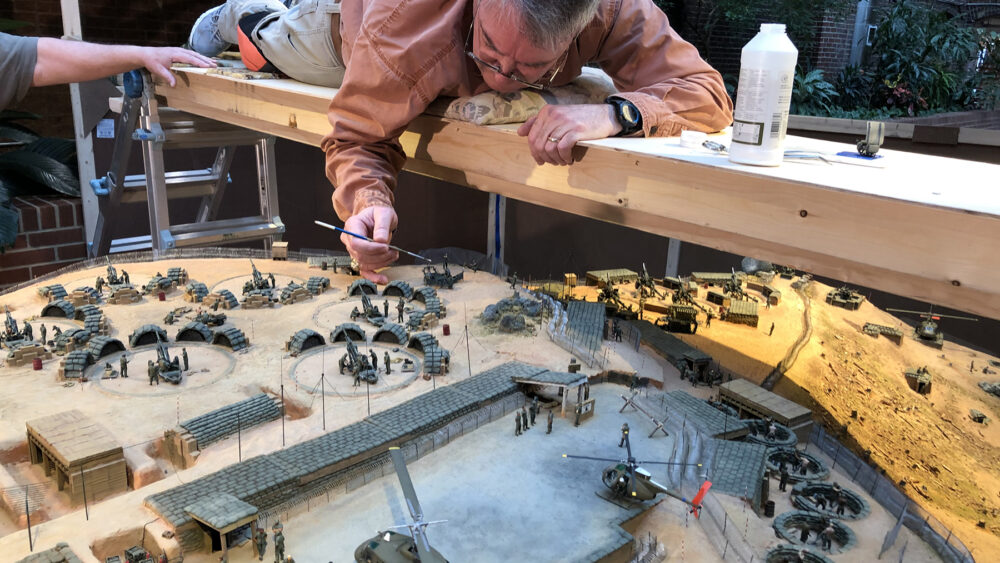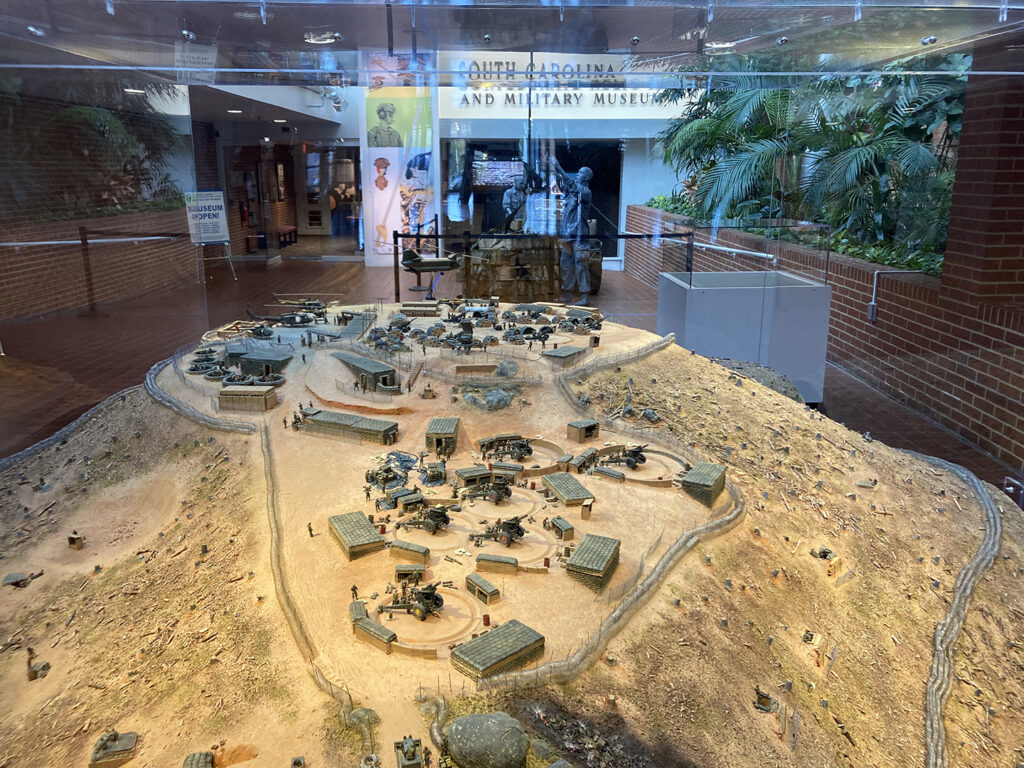In 2011, historian James Smither first attended a meeting of the Fire Support Base Ripcord Association. He’s been back every year since, and has now interviewed more than 100 veterans of the last major battle the U.S. Army experienced during the Vietnam War.
In these interviews, he has heard stories that had not made it into existing histories of the battle. This summer, he plans to start writing a new book based on what he has learned.
Before that, he will speak at the second annual Fire Support Base Ripcord Symposium, to be held on Saturday, April 29, at the South Carolina Confederate Relic Room and Military Museum in Columbia.
The museum has been holding such programs since the unveiling of the impressive display that is the first thing visitors see, in the atrium they walk through before entering the Relic Room. It was the first thing installed in connection with the major exhibit that opened on this past Veterans Day – “A War With No Front Lines: South Carolina and the Vietnam War, 1965-1973.”
It is a meticulously crafted diorama showing the entire firebase, the battlefield where soldiers of the 101st Airborne Division fought North Vietnamese regulars for several months in the spring and summer of 1970. It took more than two years for the experts with the Wildcat Chapter of the Armor Modeling and Preservation Society to build it, with the last details being assembled on-site at the museum.
The story was told from a soldier’s perspective in February, during one of the museum’s monthly Lunch and Learn lectures, by Ripcord veteran Craig Van Hout. The battle he and the other American soldiers fought there is remembered as one of the bloodiest of the war. They lost 139 killed. Four hundred were wounded in the month of July alone. Three Medals of Honor and six Distinguished Service Crosses were awarded to men who were there that month.
Veterans of that bloodbath are glad to tell their stories, and will do so at the symposium. When they came home from Vietnam, no one back in the States even knew about the battle. The bad news – aside from the casualties, in the end the American forces had to abandon the position – was kept quiet by the Nixon administration.
Van Hout was actually one of the first veterans interviewed by Smither, years ago. For his part, the historian looks forward to viewing the diorama, which he sees as an unusual opportunity. Seldom does a researcher get to see such a detailed, three-dimensional reproduction of a battlefield, which is a great help in visualizing what actually happened.
In his lecture, Smither – a professor of history at Grand Valley State University in Michigan – will try to place the battle within a broader context of the war, and the fact that it happened as the U.S. effort was winding down. Washington wanted “No more Hamburger Hills,” a reference to a better-known fight the 101st had experienced nearby the year before. So when the American commander proposed a counterattack that might have won Ripcord, he was ordered to stand down.
Ripcord was a bloody fight right up until the day the last Americans pulled out. For the soldiers there, Smither says, it was an “almost predestined tragedy,” a case of “being hung out to dry by the higher-ups, and especially by Washington.”
“My focus really here” he says of his research and his upcoming book, “is on the men themselves – who had a job to do. And to a rather remarkable degree did it.”
Here’s the schedule for the symposium on April 29:
11 a.m. – Members of the Wildcat Chapter of the Armor Modeling and Preservation Society will talk about how they built the diorama, a project begun in 2018 and completed in 2020.
1 p.m. – Professor Smither’s lecture.
3 p.m. – Veterans who were there will tell what it was like, and how they survived – and what their lives have been like since.
Throughout the day, living history re-enactors will display uniforms, weapons and other equipment of the Vietnam era in the atrium.





Comments are closed.